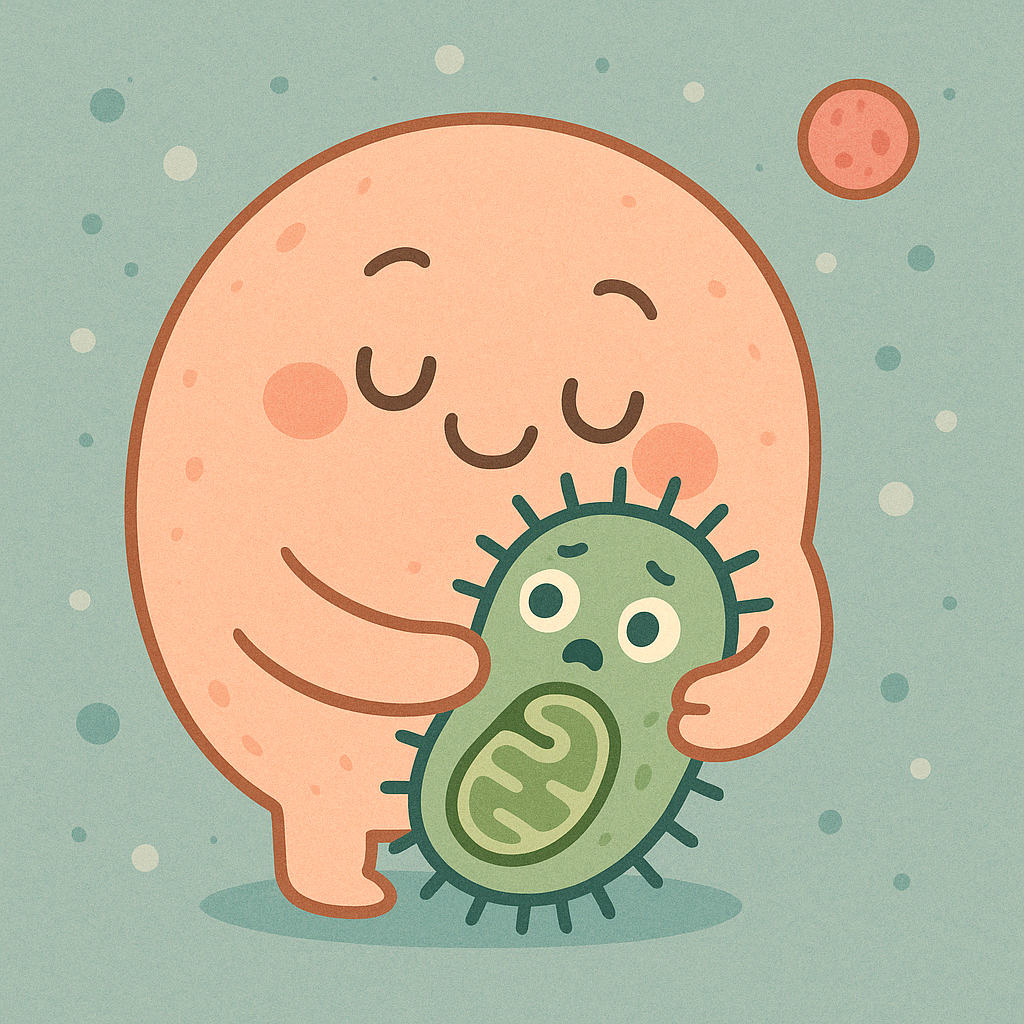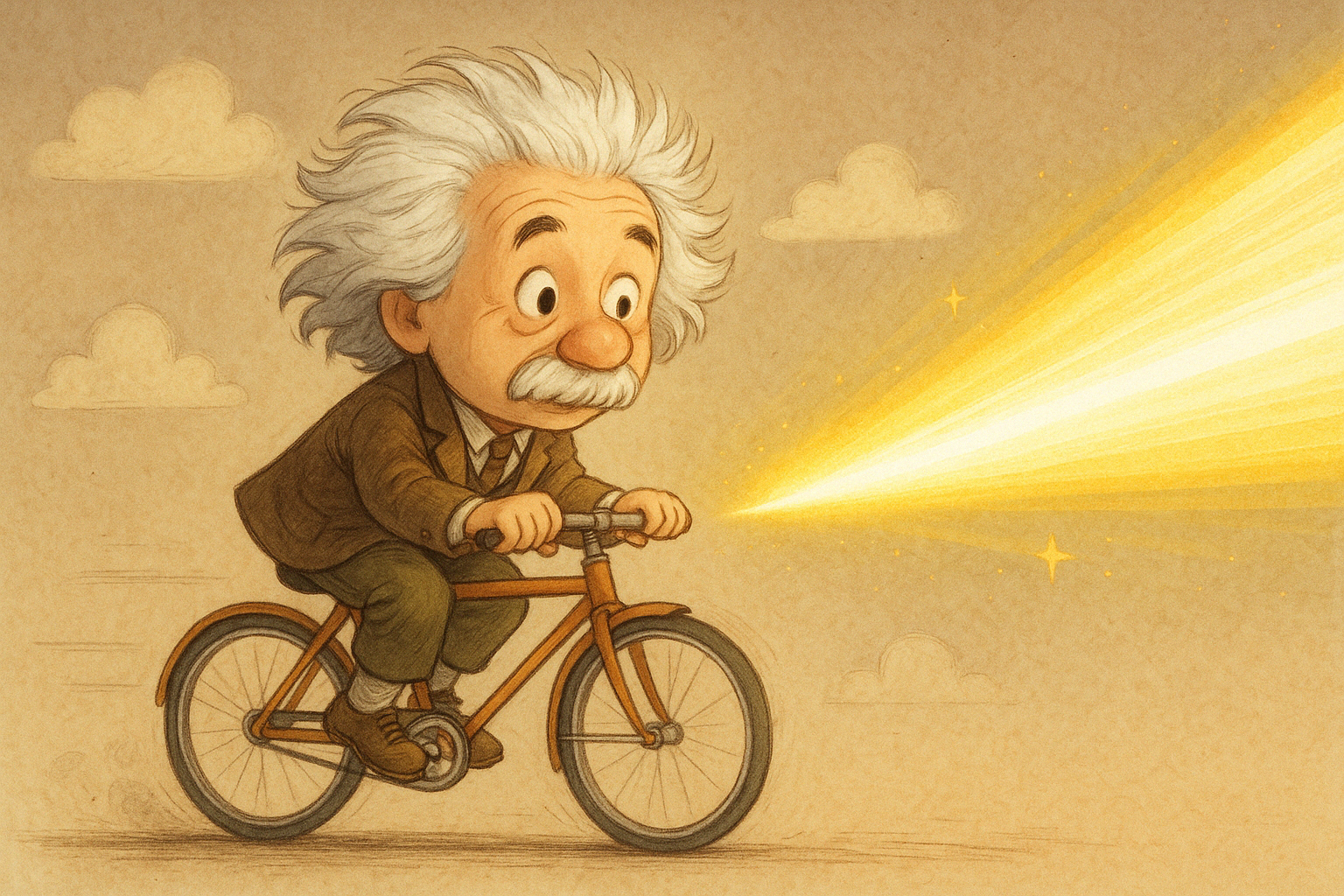We are the music makers, and we are the dreamers of dreams
About 2 billion years ago, history’s most successful codependent relationship formed:
…instead of one microbe eating the other, one took the other inside its membrane and they went into business together. - Richard Powers, Bewilderment
This primordial merger is the foundation upon which all complex life is built. The mitochondria is a symbiosis of two different organisms: a host cell, and a bacterium that uses oxygen to produce ATP, that the host consumes in exchange for providing substrates and protection. This enabled aerobic respiration at scale, and powered the explosion of eukaryotic life.

Lynn Margulis called this symbiogenesis, where new species and major evolutionary changes arise via symbiosis. Other examples include lichens, the algae-fungi muse that inspired the use of symbiosis in biology; or mycorrhizal fungi colonizing ~90% of all plant root systems to boost nutrient absorption in return for sugars. While not quite symbiogenesis, humans are symbiotes with the massive community of microbes hanging out in our gut.
~2.5 years ago today, ChatGPT launched and indelibly altered the world and humanity’s relationship to computers (perhaps literally). It felt like a seismic shift, but it didn’t materialize out of the blue. Its architecture was based on the 2017 Google paper Attention is All You Need, which was a combination of attention mechanisms (first introduced as Bahdanau attention in a 2014 paper) and neural networks (which trace their origins all the way back to Warren McCullough and Walter Pitts in 1944). Just as personal computers (Altair 8800 in 1975) were a bundling of microprocessors (launched by Intel in 1971), RAM (another IBM origin in 1968), keyboard inputs (evolved from teletypes) etc., everything that rocks us today is composed of new combinations of Lego bricks that were composed of new combinations of Lego bricks from before.
It’s combinations all the way down. Economist W. Brian Arthur theorized that technology defies Darwinian evolution of incremental change compounded over time. Instead, he describes technological shifts as combinatorial evolution. Progress is not a linear function; it is a jagged tooth that lurches and rips in spasms.
I realized that new technologies were not “inventions” that came from nowhere. All the examples I was looking at were created — constructed, put together, assembled — from previously existing technologies. Technologies in other words consisted of other technologies, they arose as combinations of other technologies…So technologies had a recurisive structure. — W. Brian Arthur, The Nature of Technology: What It Is and How It Evolves
(Saurya read the above in an earlier draft, and introduced me to Everything is a Remix. It’s a great half-hour overview of combinations in arts & sciences, though it focuses more on IP - a topic for another post)
We are also becoming a patchwork quilt combination of human and machine. This had already started long before intelligent chatbots arrived. In The Extended Mind (1998), Andy Clark and David Chalmers discuss how our external environment can become part of our cognitive processes. They give the example of Inga and Otto: Inga is neurotypical and is able to recall addresses from biological memory. Otto, on the other hand, has Alzheimer’s, and uses a notebook which he uses to store and retrieve addresses. Are the two methodologies so different? Just as pilots use their plethora of gauges and trackers to outsource status management of their vehicles, every tool - including AI - is subsumed into the human process of thinking.
Where does the mind stop and the rest of the world begin? … The mind extends into the world… — Andy Clark and David Chalmers, The Extended Mind
The point is: resistance is futile. For all the fear mongering of becoming Darwin amongst the machines, we are already symbiotic with technology. This has been happening in technology and biology for as long as life[1] itself.
But what happens next?
As human and technology amalgamate, and development of goods and services becomes cheaper and cheaper, how do we avoid a glut of rotting fruits? What happens when we are no longer constrained by the physical and biological restrictions of today?
This abundance could create either side of two extremes. The first resembles semantic heat death: the age of averages, where all content is dragged to the lukewarm mean by the gravity of maximal engagement. A sad beige aesthetic for the masses whose neurochemical flywheels have been numbed into conformity, Brave New World-style.
On the flip side is anarchy. Denser and denser communication modalities proliferate niche communities - including those who fight against the ethical norms we accept today, while lower and lower costs strip away advantages from economies of scale and crush institutions. The result is a decentralized Mad Max-esque world ground to the bone by tragedies of the commons.
The way to steer between Scylla and Charybdis will be determined by resource allocators, whose capabilities in turn will be dictated by their taste. As the marginal cost of information and intelligence continues to decrease, the Doing of the Thing becomes commoditized. Ideas are cheap, and, increasingly, execution is cheaper. It is the curation of ideas to execute upon that decides our future.
Taste is not independent of information, or smarts, and often requires both; but it is more than the sum of its parts. It encompasses deep understanding of human nature, and profound imagination unmoored from legacy priors. Taste is hard to quantify. It defies a clean algorithmic explanation. Yet perhaps it is its very non-computational nature that keeps it in the realm of the meatbags.
Consider how Einstein attributed his development of relativity to creative imagination, and how the cross-pollination of music and mathematics is what birthed the foundation of modern physics. His thought experiment of chasing a beam of light wasn’t something that was an obvious extrapolation from existing science.

[The theory of relativity] occurred to me by intuition, and music is the driving force behind this intuition. My parents had me study the violin from the time I was six. My new discovery is the result of musical perception. - Albert Einsten
That Gödelian je ne sais quoi is not in Common Crawl datasets or reinforcement learning penalties/rewards. Maybe that is what the machines need from us.
So who are these connoisseurs of the future?
They are the music makers and dreamers of dreams. The people-machines who have the insanity to bulldoze through norms and break us away from dystopian path dependency. The ones who can put impossible things together to make beautiful things possible. The inventors, builders, and founders.
Arthur O’Shaughnessy’s Ode, the source of this post’s title, ends on a somewhat Schumpterian creative destruction note:
Great hail! we cry to the comers
From the dazzling unknown shore;
Bring us hither your sun and your summers;
And renew our world as of yore;
You shall teach us your song’s new numbers,
And things that we dreamed not before:
Yea, in spite of a dreamer who slumbers,
And a singer who sings no more.
The future is coming, whether we like it or not. The question is if we can let go of obsolete concepts of who we once were, and let ourselves learn the numbers and things of the new comers. As Alan Turing concludes in his 1950 essay, Computing Machinery and Intelligence:
We can only see a short distance ahead, but we can see plenty there that needs to be done.
And holy fucknuggets am I excited to be a part of it!
Comments